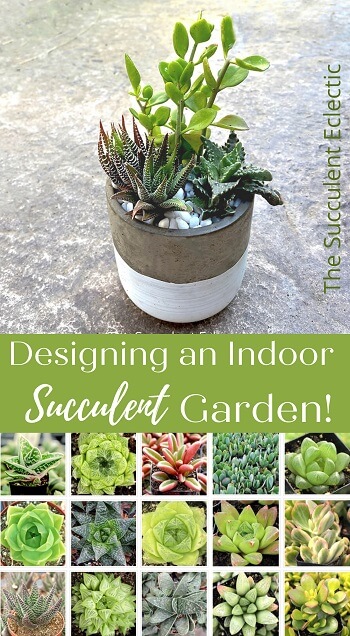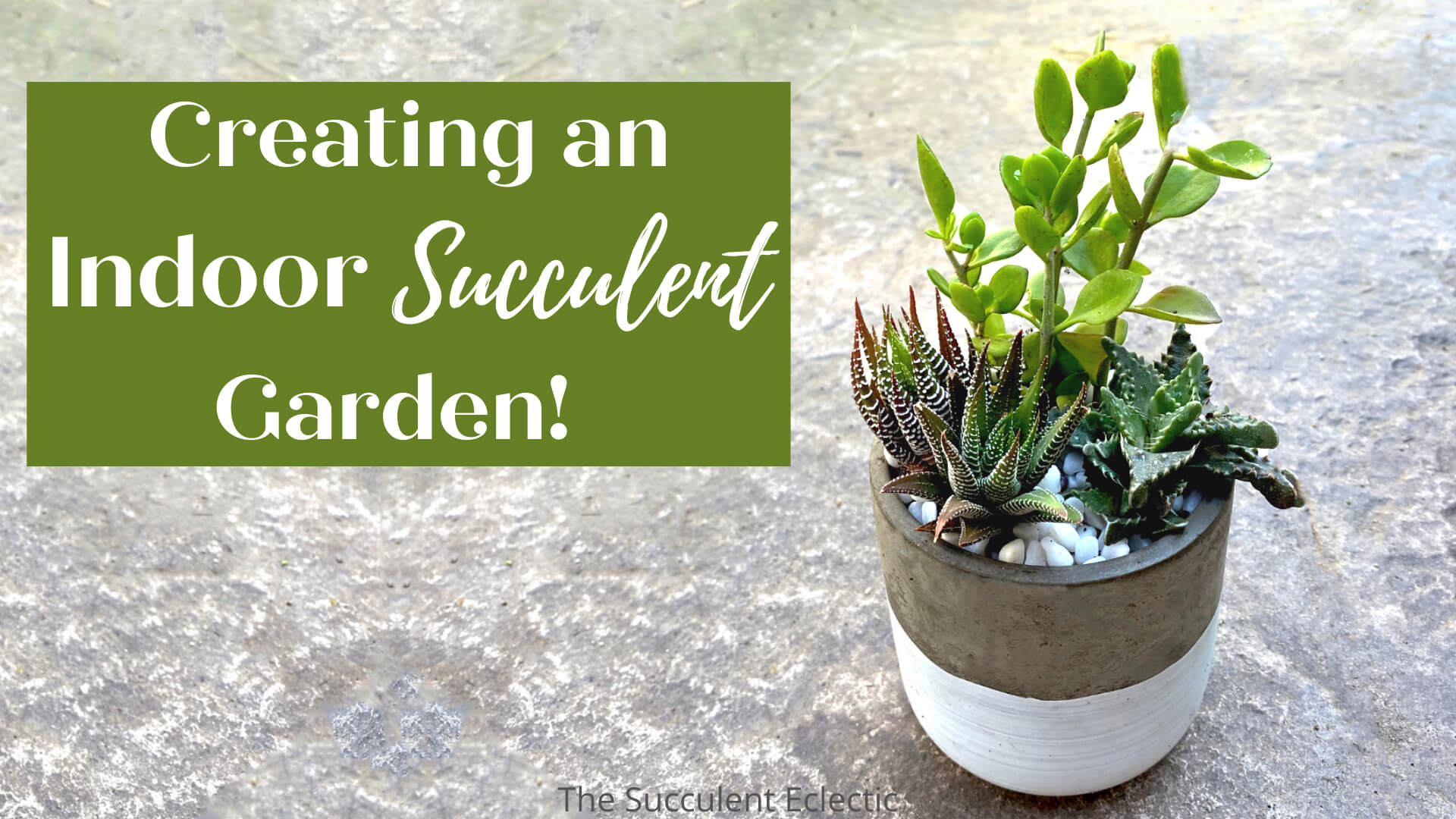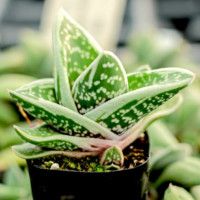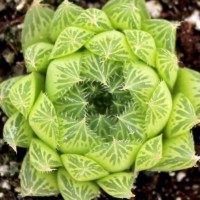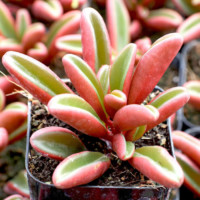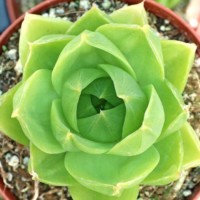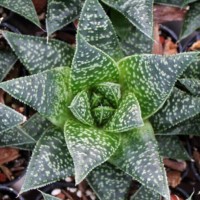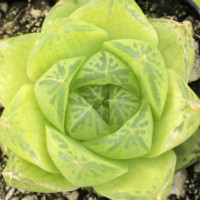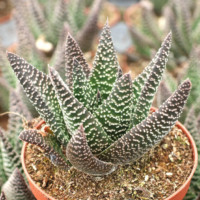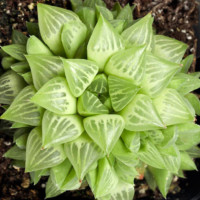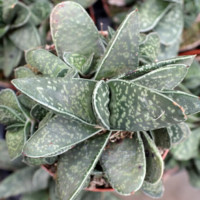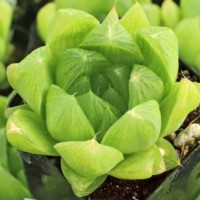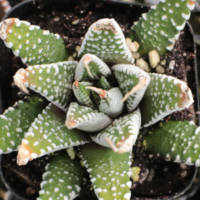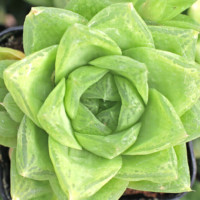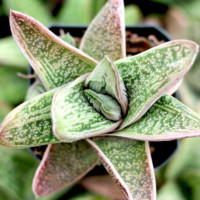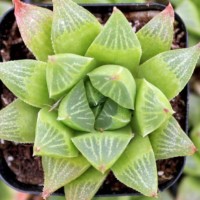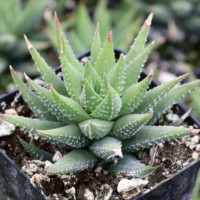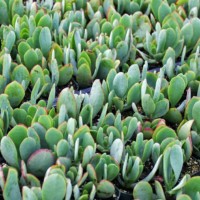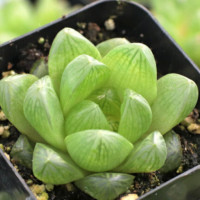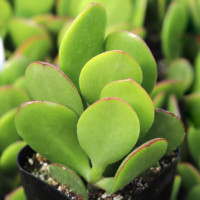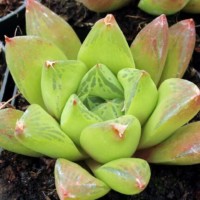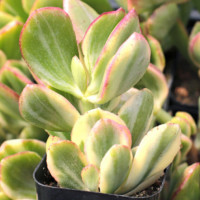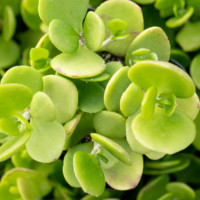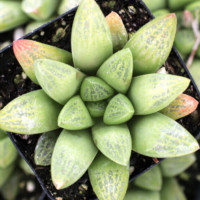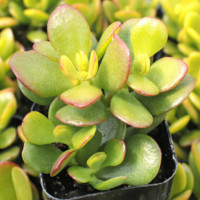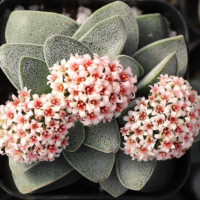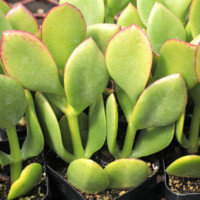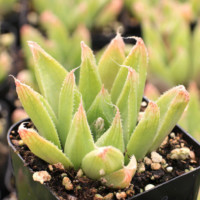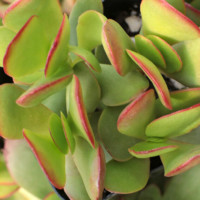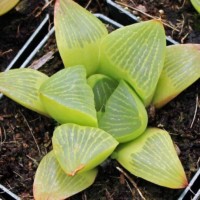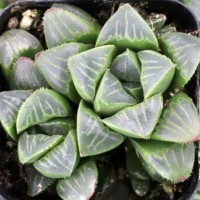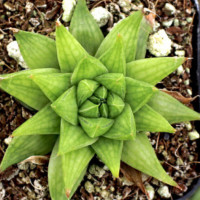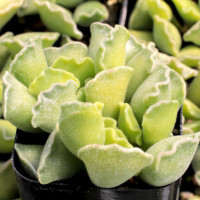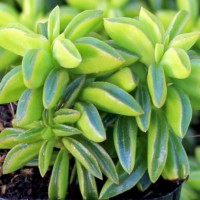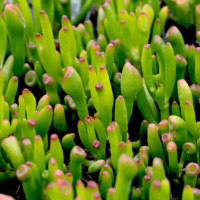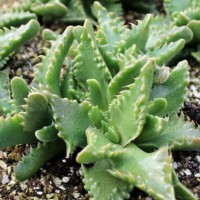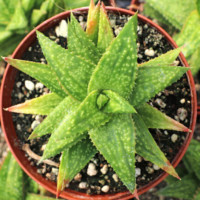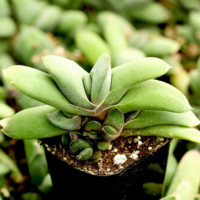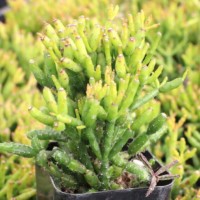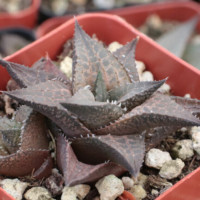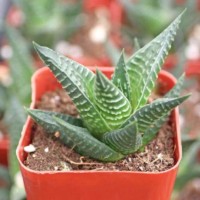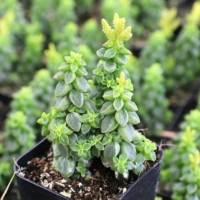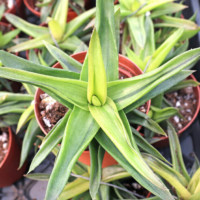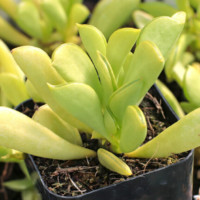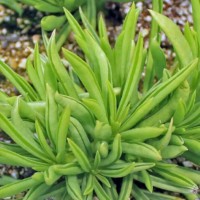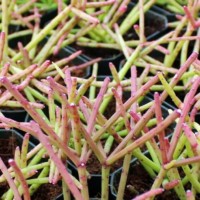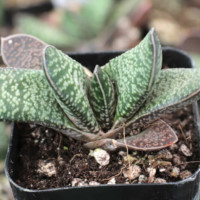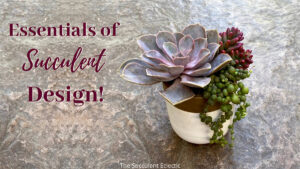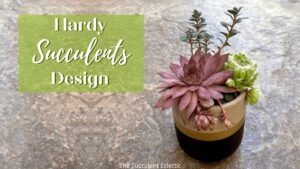This is the second post in our Essentials of Succulent Design series. In the first post, we covered succulent design based on the principle of repetition to create an arrangement that would thrive in partial sun. That arrangement repeated the colors and the shapes of the succulents in the design. Today, we’ll use the design principle contrast to create a simple indoor succulent garden. But, as will always be the case in this design series, we’ll also focus on selecting plants that will truly thrive together in the same pot, and in the recommended conditions. You are welcome to jump straight to the MCG Succulent Trifecta Kit™ based on my design. Or read on to learn the design principles and elements I used to create the design and to see the 45 succulents best for indoors that I recommend using for your own indoor succulent arrangement.
Designing an Indoor Succulent Arrangement
In this Post We'll Cover:
{Please note, some links in this post may be affiliate links to sites that pay me a small commission if you click on the link and make a purchase. This commission is at absolutely no cost to you. I only recommend products and companies that I have worked with and truly love! ~Kat}
Understanding Design Principles and Elements
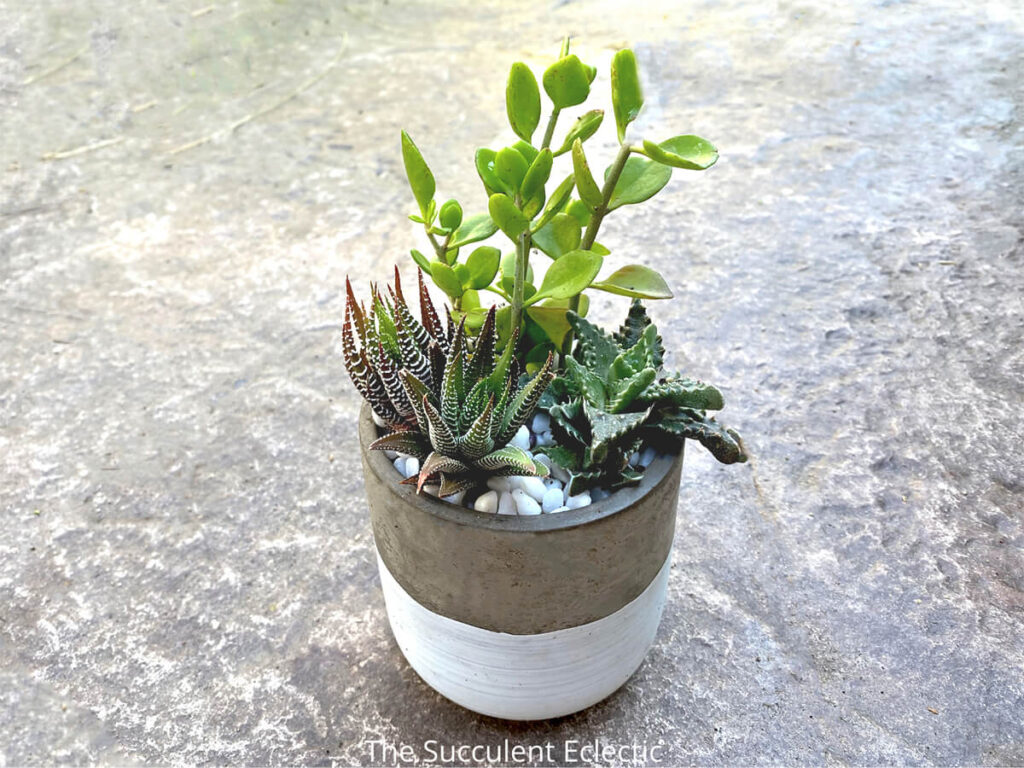
When you create a succulent arrangement, you combine qualities of the plants, the pot and the top dressing to create a pleasing whole. But you should think of the arrangement as including a part of yourself, too, right? Your choice of succulents, your choice of pot and top dressing, and the way you place the plants are all as much a part of the design as the plants themselves. So, when we speak of the principles and elements of succulent design, the principles are what you bring to the arrangement and the elements are parts of the plants, pot and top dressing.
The elements of design are all about the visual qualities of the plants, pot and top dressing you use. Design elements include the colors, textures and forms of the physical parts of the arrangement. For example, in the indoor succulent garden above, the elements include the deep green color of the Haworthia fasciata and the Faucaria tuberculosa. The bands of bright white tubercles in the Haworthia. The spikey shape of the Haworthia, the bumps and “fangs” of the Faucaria and the smooth, round leaves of the lighter green Kalanchoe hildebrantii are all elements of this indoor succulent garden. So, too, are the smooth white and grey pot and the white top dressing. Together, they combine to form a sense of harmony.
The design principles that guided my selection of the plants, the pot and the top dressing include repetition, contrast and proportion. Today, we’ll focus on contrast as we create an indoor succulent arrangement.
Succulent Design Principle Contrast

The design principle contrast is the pairing of two opposite elements, to the enhancement of both. Examples of contrast include pairing black with white, rough with smooth, matte with shiny, round with spikey, etc. In this photo, the grandmother’s rough, rugged, aged hands contrast with the baby’s soft, smooth, fresh skin. Her hands look even more work-worn due to the contrast with the child she holds. And the child’s feet and toes seem infinitely more precious and tender due to the same contrast. The contrast serves to emphasize not just the difference between the two elements. But it also makes the qualities of each element even more pronounced. For example, white never looks so clear and so bright as when it is contrasted with black. When you pair rough with smooth, the rough appears rougher and the smooth is even smoother. In this way, contrast brings out the best in the two different elements.

When designing an indoor succulent arrangement, you typically will not have many bright colors to choose from. Most of the succulents that truly thrive in low light indoors are primarily green. So, let’s concentrate on the design elements of form and texture.
For this indoor succulent garden, I focused on the contrast of form and texture. See how the spikey form of the Haworthia fasciata “Zebra Plant” contrasts with the rounded leaves of the Kalanchoe hildebrantii? The Faucaria both repeats the triangular shape of the Haworthia leaves and also contrasts with the Kalanchoe. In addition, the Haworthia’s dark green leaves are covered with bands of small, bright white tubercles that add a rough texture. The leaves’ bright white and dark green give fasciata its own wonderful contrast that makes it a favorite choice for an indoor succulent garden. The bumps are repeated by the Faucaria tuberculosa, which also contrasts with the Kalanchoe.
The Cores, Complement and Character of Design
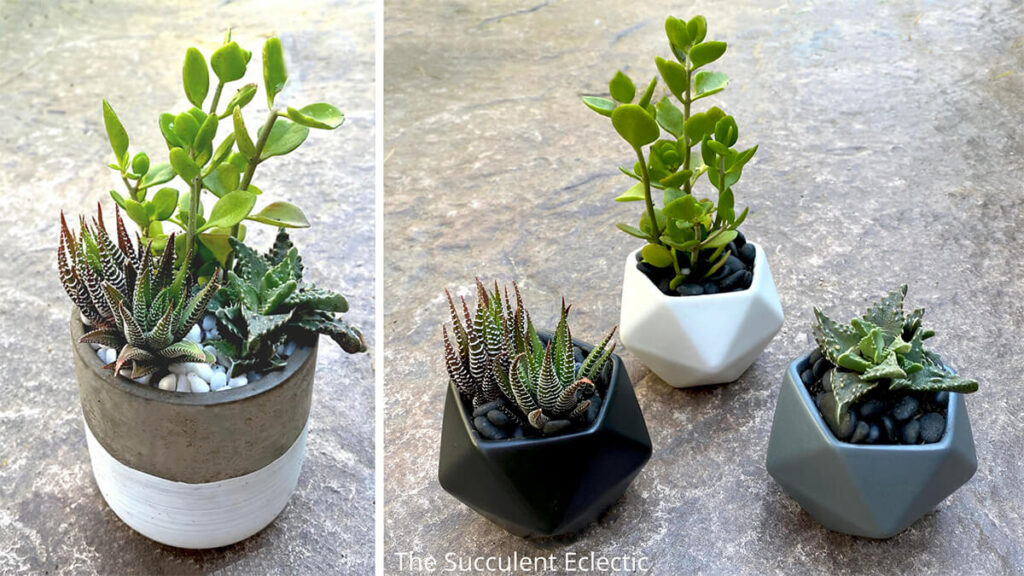
As a refresher, we are focusing on simple succulent designs that look good together, using only succulent varieties that will thrive in the same pot. We are starting with trios, made up of a Core plant, which is the heart of the arrangement, the star of the show. Next, the Complement is a plant selected for the way is complements the Core, and enhances its beauty. Finally, the Character complements both the Core and the Complement while introducing a new, whimsical texture. Please read about succulent design made simple for a deeper understanding of my Core, Complement and Character design philosophy.
This indoor succulent garden design was the inspiration for the MCG Trifecta Kit™ Flora Dora. (The name Flora Dora means “plant gift”). The Core, or the heart of the Flora Dora indoor succulent arrangement is the boldly striped and spotted Haworthia fasciata. The contrast of the dark green leaves and bright white tubercles arranged in regular stripes gives this beauty the common name “zebra plant”. Together with the strong, vertical lines and spiky texture, this coloring makes it a favorite indoor succulent. The Haworthia is beautifully contrasted and framed by the round, soft-green leaves of Kalanchoe hildebrantii var. Glabra, the Complement of this succulent design. At the base of the Kalanchoe, the Faucaria tuberculosa seems to snarl, displaying whimsical “fangs” and bumps that lend such drama to this indoor succulent garden. Feel free to pet the Character of this design — the teeth of the Faucaria look fierce, but are soft and flexible.
I designed the Flora Dora collection to thrive indoors in most homes. Provide bright light indoors, or dappled shade outdoors. This indoor succulent arrangement is hardy outdoors in zone 10
Designing an Indoor Succulent Garden
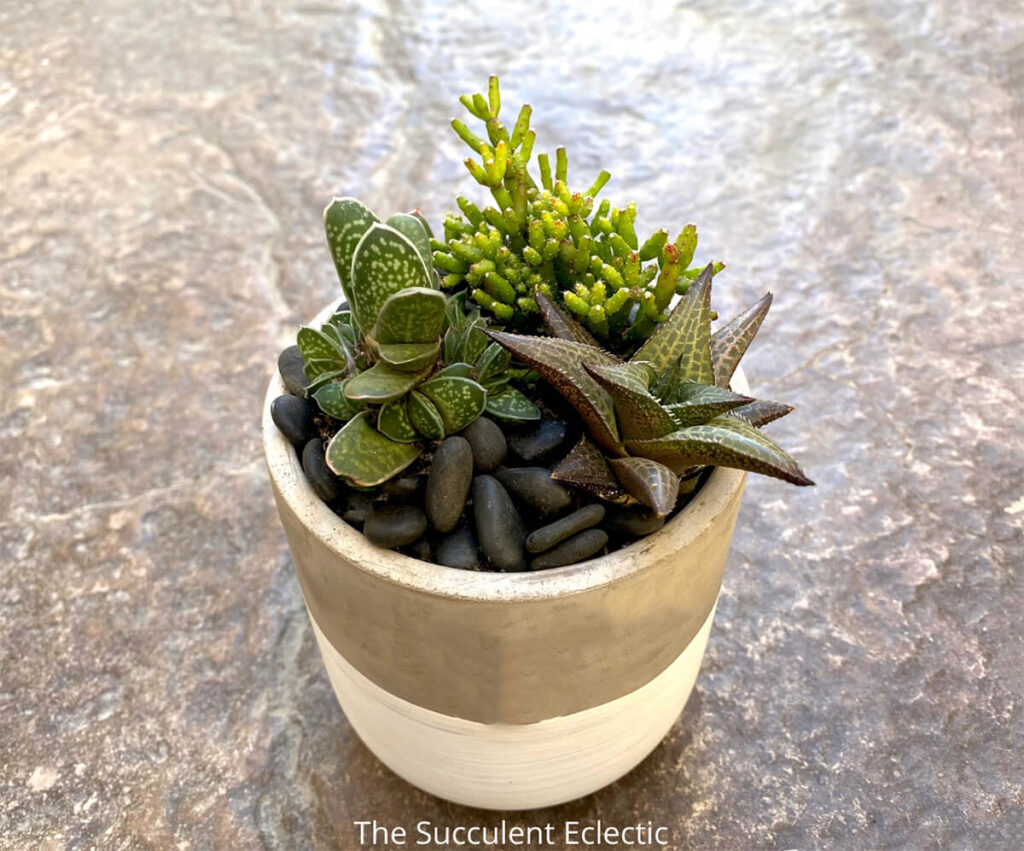
I designed the Flora Dora indoor succulent garden based on the design principle contrast. But, as always, the artistic interest is just half of a successful succulent design. You also want to select only succulents that will thrive together in the same lighting, watering and climate conditions.
Since this was intended to be an indoor succulent arrangement, I worked only with indoor succulents. However, the universe of succulents that grow well indoors with large, bright windows that have natural light streaming in, is far larger than the one that contains varieties that grow in low light, like I have available in my home. So, on the assumption that many of you may also have relatively dark homes, I restricted my selection only to those succulents that can thrive in low light indoors. Given that, you still want to give your indoor succulent garden as much light as possible. But if you don’t have huge windows and skylights, this will still work well for you!
Best Succulents for Indoor Succulent Garden
So, now you understand the Core, Complement and Character style of succulent design. So, now, you want to create your own indoor succulent garden! Here are 45 succulents that all thrive in low light indoors, with similar watering needs. I have divided them into Core succulents, Complement succulents and Character varieties. Of course, you might not agree with my evaluation of their looks, but it helps to organize the plants.
Core Succulents for Low Light Indoors
The Core is the heart of your indoor succulent arrangement. It is the star of the show that you design around.
Complement Succulents for Low Light Indoors
Choose your Complement for its ability to enhance the beauty of the Core plant you have chosen. Try choosing one that repeats or contrasts with the form, color or texture of the Core.
Character Succulents for Low Light Indoors
Your Character succulent should introduce a fun or intriguing texture or shape that ties your indoor succulent garden together and makes it memorable!
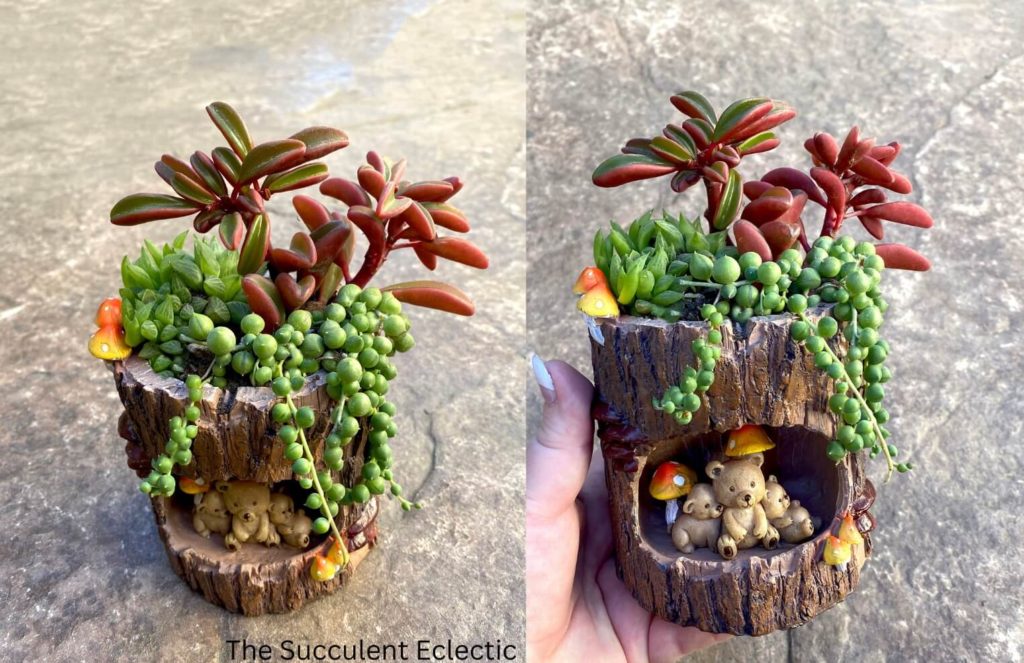
Of course, you can have a lot of fun with your indoor succulent garden designs. I just love this adorable bear pot I received for my birthday. Crazy cute, right? I planted it with the colorful Peperomia graveolens ‘Ruby Glow,’ Haworthia retusa f. geraldii and Senecio rowleyanus ‘String of Pearls’. Can you tell which is my Core, Complement and Character? How about the design principles I used? (Hint – I used contrast and repetition — can you tell where?)
This was the second in this series Essentials of Succulent Design. I do hope you find the information valuable! I’d really appreciate it if you would take a moment to let me know what you think! Does the Core, Complement and Character design approach work for you? I would love to know. Especially if you have any questions or suggestions for how I could make this series more clear! Just leave me a comment and I will get right back to you! The next succulent arrangement in the series will thrive in full sun and is cold hardy!
Because life is just better with succulents!
P.S. For more information on succulent design, care and crafts, please subscribe! I’ll send you my FREE e-course, 7 Steps to Succulent Success! Thanks!
P.P.S. Why not join my Facebook Group for succulent lovers? We talk about succulent care, propagation, succulent identification, and design. It’s a warm and welcoming group that would love to meet you!
P.P.S. Why not join my Facebook Group for succulent-lovers? We talk succulent care, propagation, identification and design. It’s a warm and welcoming group that would love to meet you!
